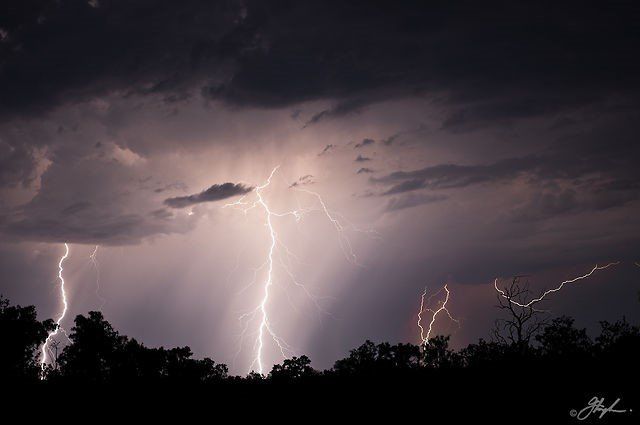
Thunderstorm Basics
What is a Thunderstorm?
A thunderstorm is formed from a combination of moisture, rapidly rising warm air and a force capable of lifting air, such as a warm or cold front, a sea breeze, or a mountain.
What is Lightning?
Lightning is an electrical discharge that results from the buildup of positive and negative charges within a thunderstorm. When the buildup becomes strong enough, lightning appears as a bolt. If you can hear thunder, you are close enough to the storm to be struck by lightning.
REMEMBER THE 30/30 LIGHTNING SAFETY RULE:
Go indoors if, after seeing lightning, you cannot count to 30 before hearing thunder. Stay indoors for at least 30 minutes after hearing the last clap of thunder.
Know the Facts
Thunderstorm Facts
- Thunderstorms may occur singly, in clusters or in lines.
- About 10% of thunderstorms are classified as severe: They produce hail at least 3/4 of an inch in diameter, have winds of 58 mph or higher or produce a tornado.
- Thunderstorms typically produce heavy rain for a brief period, anywhere from 30 to 60 minutes.
Lightning Facts
- Lightning's unpredictability increases the risk to individuals and property.
- Lightning often strikes outside of heavy rain and may occur as far as 10 miles away from any rainfall.
- Heat lightning is actually lightning from a thunderstorm too far away for the thunder to be heard.
- Males are five times more likely than females to be struck by lightning.
- The odds of being struck by lightning in a given year are about 1 in 500,000. However, some people may have a higher risk if they work outside or live in certain parts of the country such as Florida or Texas.
Know the Terms
Severe Thunderstorm Watch
A watch is issued when conditions are favorable for the formation of severe thunderstorms.
Severe Thunderstorm Warning
A warning is issued when a severe thunderstorm has been sighted or indicated by weather radar.
Heat Lightning
Heat lightning is lightning from a thunderstorm that is too far away for thunder to be heard. However, the storm may be moving your direction.
Dry Thunderstorms
Dry thunderstorms do not produce rain that reaches the ground. Falling raindrops evaporate, but lightning can still reach the ground and can start wildfires. They are most prevalent in the western U.S.
Danger Zones in the U.S.
While thunderstorms and lightning can be found throughout the U.S., they are most likely to occur in the central and southern states. The state with the greatest number of thunderstorms is Florida.
Is it Safe to...?
To talk on the phone?
Do not use corded phones. Cell phones and cordless phones are safe to use during a lightning storm as long as they are not connected to an outlet through a charger.
Stand under a tree?
No. Being underneath trees is the second leading cause for lightning deaths.
Take a shower or bath?
No. Lightning can travel through plumbing. It is best to avoid all water during a lightning storm. Do not sower, bathe, wash dishes or wash your hands.
Tough somebody who was struck by lightning?
Yes. Lightning victims are not electrified and you will not be electrocuted by touching someone who has been struck in a lightning storm. Call 911 and begin first aid response immediately.
FIRST AID FOR LIGHTNING STRIKE VICTIMS
- Call for help. Call 911 immediately. Give directions to your location and information about the strike victim(s). It is safe to use a cell phone during a storm.
- Assess the Situation. Ask:
- How many victims are there?
- Where was the victim struck?
- Is the storm still continuing?
Be aware of the continuing lightning danger to both the victim and rescuer. If the area where the victim is located is high risk (e.g., an isolated tree or open field), the victim and rescuer could both be in danger. If necessary, move the victim



